
Roots
Consider, if you will, the profound resonance held within a single strand of hair, particularly for those whose lineage traces through Black and mixed-race ancestries. It is a biological marvel, certainly, yet it extends far beyond protein and pigment. This fibrous crown acts as a living archive, holding whispers of ancient sun, tales of forced migration, and anthems of resistance. To understand its role in community strength means first listening to these foundational echoes, recognizing hair not as a mere adornment, but as a deep inscription of identity and survival across countless generations, a palpable link to a vibrant heritage.

Ancestral Structures and Modern Understanding of Textured Hair
The architecture of textured hair, with its unique helical spirals and elliptical cross-sections, presents a testament to evolutionary adaptation. In the sweltering heat of ancestral African landscapes, this particular curl pattern provided essential insulation, shielding the scalp from intense ultraviolet radiation while also aiding in temperature regulation by allowing air circulation close to the skin. This biological design speaks volumes about the wisdom embedded in our very physical form, a heritage written in every coil and kink. From a scientific vantage, the hair follicle’s shape largely dictates the curl pattern of the hair shaft.
An oval or irregularly shaped follicle yields the distinct curves we see in textured hair, differing significantly from the round follicles that produce straight strands. This fundamental biology underscores the unique care requirements and inherent resilience of these hair types.
Moreover, the distribution of disulfide bonds within the hair cortex, which are crucial for maintaining hair’s shape and strength, also varies in textured hair. These bonds, along with hydrogen bonds and salt bonds, contribute to the hair’s elasticity and how it responds to moisture. The natural inclination of textured hair to contract upon drying, often referred to as shrinkage, is a direct consequence of its coiled structure and the way its protein bonds respond to hydration levels. This characteristic, often misunderstood, is actually a sign of vitality and elasticity, a reminder of its unique biological heritage.

The Historical Lexicon of Textured Hair
The language used to describe textured hair holds its own historical weight, reflecting shifts in perception and power. In pre-colonial African societies, the descriptive terms for hair were often linked to specific styles, social status, or tribal affiliations. However, with the transatlantic slave trade and subsequent colonial influences, external terminologies emerged, many imbued with derogatory connotations. Words once associated with strength or unique beauty were twisted to signify “unruly” or “unprofessional.” This linguistic shift was a deliberate act of cultural erasure, part of a broader strategy to diminish the identity of enslaved peoples.
The reclamation of language in recent generations stands as a powerful act of heritage preservation. Terms such as Coils, Kinks, and Waves are now celebrated descriptions, articulating the diverse spectrum of textured hair without judgment. This re-adoption of affirming language helps dismantle historical biases and rebuilds a narrative centered on appreciation and respect for ancestral hair forms. Understanding this evolving lexicon is a vital component of appreciating the enduring spirit of Black communities.
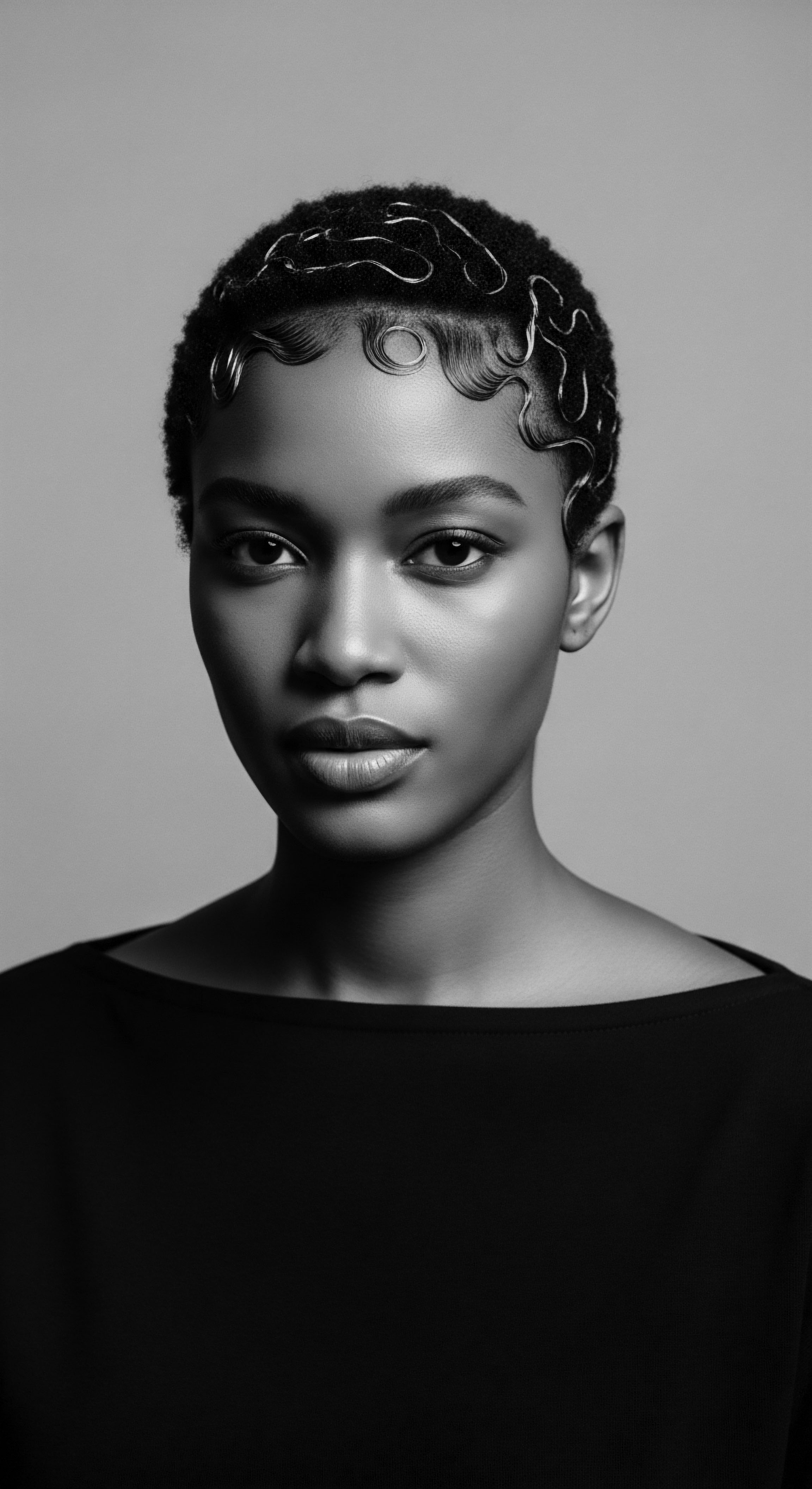
How Did Ancestral Classifications Shape Identity?
Long before modern classification systems, African communities possessed their own intricate methods of identifying individuals through hair. These ancient systems went beyond mere aesthetics; they conveyed critical social information. Hairstyles could denote age, marital status, tribal affiliation, wealth, and social rank.
For instance, among certain West African groups, specific braided patterns might distinguish a married woman from a single one, or a leader from a commoner. These intricate styles required significant time and skill, often becoming communal rituals where older generations passed down techniques and cultural wisdom to the young.
In ancestral African societies, hair acted as a visual language, its styles communicating an individual’s place within their community and their connection to spiritual realms.
The systematic shaving of heads upon arrival during the transatlantic slave trade was a deliberate act of stripping these visible markers of identity, severing connections to heritage and community structure. This cruel practice aimed to homogenize and dehumanize, to erase the very history written on the scalp. Yet, even in the face of such brutality, the memory of these styles persisted, adapted, and eventually re-emerged as powerful symbols of defiance and enduring identity.

Hair Growth Cycles and Historical Influences
The natural rhythm of hair growth, encompassing anagen (growth), catagen (transition), and telogen (rest) phases, remains universal across human hair types. However, historical and environmental factors have long influenced the observable health and length of textured hair within Black communities. In pre-colonial Africa, indigenous populations had access to a wealth of natural resources for hair care.
Plant-based oils, butters, and herbs, like shea butter and coconut oil, provided essential moisture and protection against the elements. These traditional ingredients supported healthy hair growth and scalp well-being, contributing to the often-celebrated density and strength of ancestral African hair.
The disruption of these practices during forced migration and enslavement severely impacted hair health. Lack of access to traditional ingredients, clean water, proper tools, and the harsh realities of forced labor led to significant hair damage and neglect. Enslaved individuals, stripped of their ancestral rituals, improvised with whatever was available—bacon grease, butter, or kerosene—to moisturize and manage their hair, highlighting a desperate yet determined effort to preserve a semblance of personal care under unthinkable conditions. This period marked a profound disconnect from the holistic care philosophies that once sustained hair health, creating challenges that would echo through generations.
The historical journey of textured hair reveals a constant interplay between intrinsic biology, cultural expression, and the resilience of a people. From the very structure of the strands to the words chosen to describe them, and the care routines that nourish them, each element carries layers of heritage, speaking to an enduring spirit that refused erasure.

Ritual
From the foundational wisdom of ancestral practices, the journey of Black hair care extends into the dynamic realm of styling, a space where tradition meets transformation. Styling textured hair has always been far more than a matter of fleeting fashion. It represents a living dialogue with heritage, a visual language of identity, and a communal practice of care that has both adapted to and defied prevailing societal pressures across generations. The rituals surrounding hair styling have consistently served as a testament to creativity, adaptability, and the profound resilience embedded within Black and mixed-race experiences.

The Enduring Legacy of Protective Styling
Protective styling, deeply rooted in ancestral African practices, stands as a cornerstone of textured hair heritage. These styles, designed to shield the hair strands from environmental damage and manipulation, allowed for length retention and overall hair health long before scientific terms like “trichology” were common parlance. Styles like Cornrows, Braids, and Twists were not merely aesthetic choices in ancient African societies; they were intricate systems of communication, identifying tribe, social status, age, and even marital eligibility. For instance, historical accounts from the Yoruba people of Nigeria speak to hair threading, or “Irun Kiko,” as a tradition dating back to the 15th century, considered as vital as head care for inviting good fortune.
During the brutal era of the transatlantic slave trade, these styles took on a covert but powerful role in resistance. Enslaved Africans ingeniously braided grains, seeds, and even gold dust into their hair, securing sustenance for perilous escapes. Moreover, specific cornrow patterns served as clandestine maps, charting escape routes and rendezvous points for those seeking freedom on the Underground Railroad.
This remarkable adaptation transformed hair care from a cultural expression into a tool for survival and liberation, a testament to the ingenuity of a people determined to defy their captors. This historical use of hair for survival is a powerful illustration of hair care’s direct link to community resilience.

How Did Hair Styling Become a Tool for Resistance and Self-Preservation?
The period following emancipation brought new challenges, as Eurocentric beauty standards heavily influenced perceptions of “presentable” hair. Straightened hair became a symbol of assimilation, often a perceived necessity for social and economic advancement. Black women, in particular, navigated this complex terrain, using hot combs and chemical relaxers as tools of both conformity and, paradoxically, self-preservation in a society that often discriminated against their natural textures. Madame C.J.
Walker, a pioneering entrepreneur of the early 20th century, built an empire by developing and marketing hair care products and systems tailored for Black women, addressing scalp ailments and promoting hair growth. Her work not only provided solutions for hair management but also created economic opportunities and a sense of agency for countless Black women, establishing one of the earliest successful Black-owned businesses.
The mid-20th century, especially with the Civil Rights and Black Power movements, witnessed a resurgence of natural hair as a deliberate act of defiance and pride. The Afro became a powerful symbol of Black identity, a rejection of imposed beauty norms, and a visible declaration of cultural heritage. Icons like Angela Davis and the Black Panther Party members proudly wore their Afros, making a political statement with their hair. This era marked a collective reclamation of ancestral aesthetics, affirming the inherent beauty of textured hair.
| Era and Focus Pre-Colonial Africa Identity and Status |
| Traditional/Adapted Styles Braids, Locs, Threading, Elaborate Adornments |
| Significance to Resilience Visual communication of social standing, spiritual connection, communal bonding. |
| Era and Focus Transatlantic Slave Trade Covert Survival |
| Traditional/Adapted Styles Cornrows, Simple protective styles (often hidden) |
| Significance to Resilience Concealing seeds, mapping escape routes, preserving cultural memory under duress. |
| Era and Focus Post-Emancipation to Mid-20th Century Assimilation and Economic Agency |
| Traditional/Adapted Styles Hot-combed hair, Relaxers, Wigs |
| Significance to Resilience Navigating societal pressures for acceptance, creating independent beauty industries. |
| Era and Focus Civil Rights & Black Power Era Reclamation and Pride |
| Traditional/Adapted Styles Afro, Braids, Locs |
| Significance to Resilience Symbol of defiance against Eurocentric norms, assertion of Black identity and political statement. |
| Era and Focus The evolution of Black hair styling reflects a continuous narrative of adaptation, resistance, and the enduring celebration of heritage. |
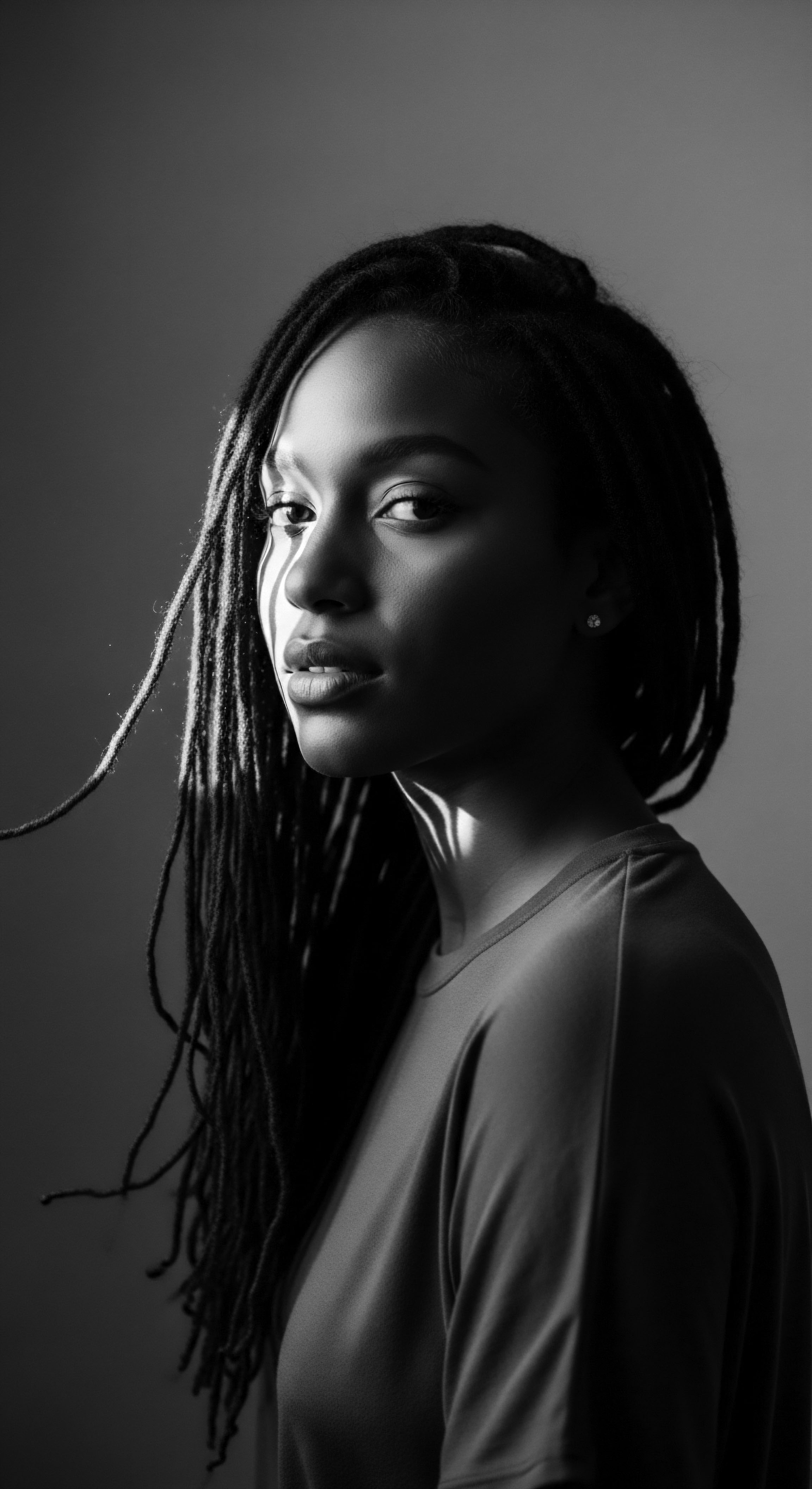
The Tools of Transformation from Ancestry to Present Day
The tools employed in textured hair styling have also evolved, yet many modern implements echo ancestral designs or fulfill similar functions. In ancient Africa, combs carved from wood or bone, along with natural fibers for threading and braiding, were essential. These tools were often considered sacred, passed down through families, embodying the ancestral hands that shaped and cared for generations of hair.
With the advent of new technologies, innovations like the hot comb and later chemical relaxers transformed styling possibilities. While these tools offered a pathway to desired aesthetics, they often came with their own set of challenges, including potential damage if not used with care. Today, a return to practices that prioritize hair health has spurred the creation of tools specifically designed for textured hair, such as wide-tooth combs, detangling brushes, and specialized heat tools that minimize stress on delicate coils. This modern toolkit, in many ways, seeks to harmonize scientific understanding with the principles of gentle, protective care reminiscent of older traditions.
The act of styling textured hair, whether through ancient braiding rituals or contemporary natural hair techniques, has always been a powerful expression of self and community. It is a dialogue between past and present, a visible declaration of heritage, and a dynamic art form that continues to shape identity and foster resilience within Black communities worldwide.

Relay
The care of textured hair extends beyond its physical attributes and stylistic expressions; it forms a deeply ingrained practice of self-regard, community solidarity, and problem-solving rooted in ancestral wisdom. This care regimen, handed down through generations, constitutes a vital aspect of Black community strength. It is a dialogue with the past, a nurturing act in the present, and a testament to enduring heritage that shapes futures.

Building Personalized Textured Hair Regimens from Ancient Wisdom
The modern quest for personalized hair care often finds its echoes in the individualized approach of ancestral practices. Before mass-produced products, communities relied on local botanicals and inherited knowledge to create bespoke remedies. Ingredients like Shea Butter from West Africa, Argan Oil from North Africa, and various indigenous herbs were staples, known for their moisturizing and protective qualities. These natural components were not applied generically; their use was guided by observations of individual hair needs, local climate, and specific hair conditions, creating care regimens that were inherently personalized.
Today, this wisdom translates into understanding hair porosity, elasticity, and density to craft effective routines. The emphasis shifts from universal solutions to tailored approaches, a concept deeply reflective of ancestral methodologies that honored the unique qualities of each person’s hair. This continuum of personalized care underscores a legacy of attentive, responsive hair maintenance that predates industrialization, urging a mindful engagement with our hair’s specific requirements, a practice that strengthens both strands and spirit.
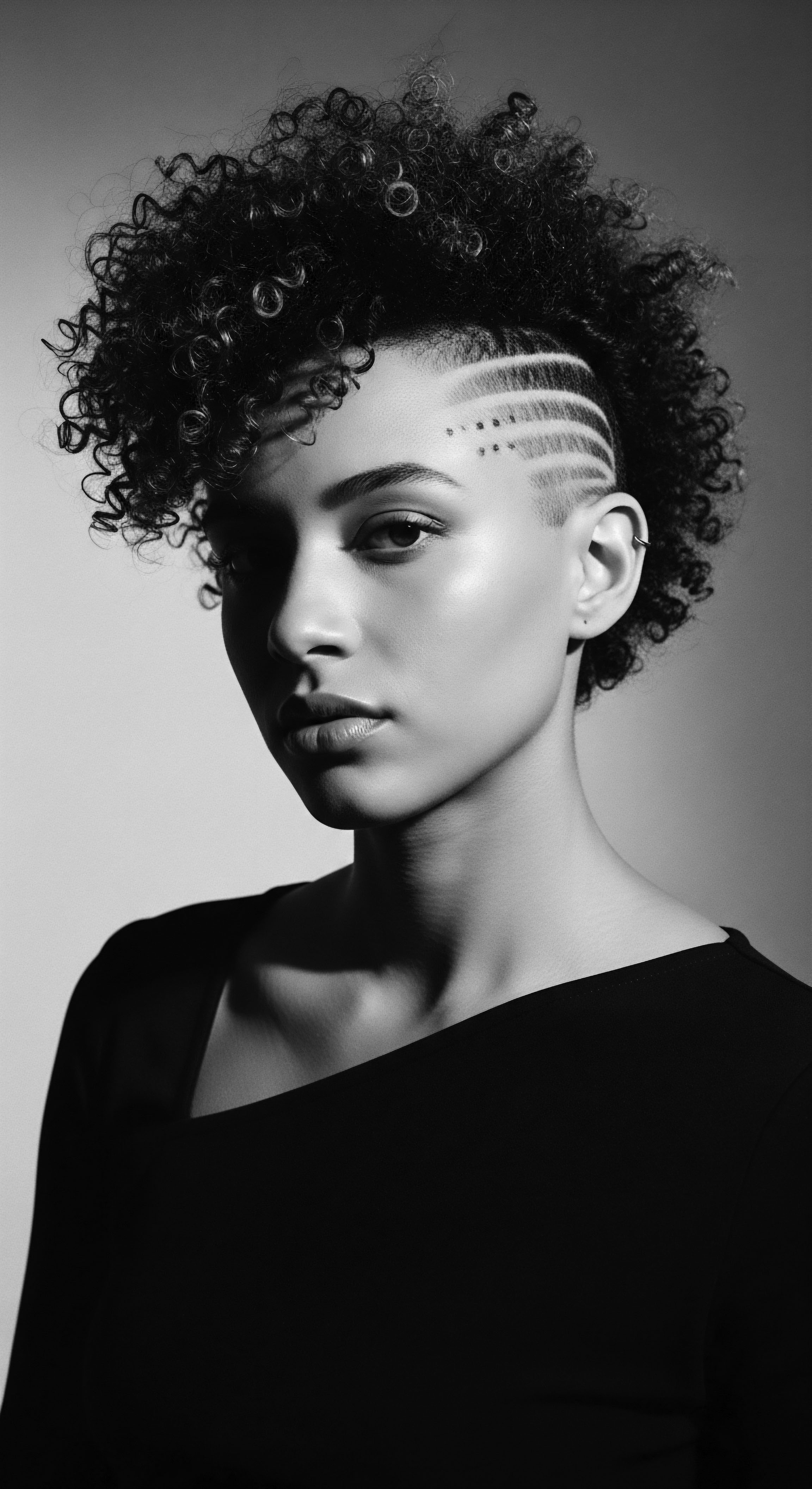
The Nighttime Sanctuary ❉ Essential Sleep Protection and Bonnet Wisdom
The ritual of nighttime hair protection holds a particularly intimate place in the heritage of Black hair care. The use of head coverings, from elaborate wraps in ancient Africa to the ubiquitous modern Satin Bonnets and scarves, serves a dual purpose. Historically, head wraps often denoted social status, modesty, or religious affiliation in various African societies. With forced migration, these coverings acquired new significance, offering protection for hair against harsh conditions and acting as a private, personal space for self-care when public expression of identity was suppressed.
Nighttime hair rituals, particularly the use of protective coverings, represent an intimate historical practice of self-preservation and care for textured hair.
In contemporary times, the satin bonnet remains a cultural artifact, a quiet act of preservation against friction and moisture loss during sleep. The smooth surface of satin or silk minimizes snagging and breakage, maintaining moisture within the hair shaft, which is particularly prone to dryness in textured hair. This simple, yet profoundly effective, practice is a direct legacy of ancestral wisdom—a recognition that consistent, gentle care, even during slumber, contributes to the health and vitality of the hair. It symbolizes a conscious dedication to hair health, an everyday act of heritage.

How Did Traditional Ingredients Become Foundational for Hair Health?
The ingredient knowledge passed down through Black communities represents a profound understanding of natural science and botanical properties. Generations relied on plants and natural elements found in their environments to address various hair and scalp concerns. For example, Chebe Powder, sourced from the Chad region, has been used by the Bassara women for centuries, credited with their remarkable hair length retention due to its moisturizing and strengthening properties.
A statistical insight into the economic significance of this heritage can be observed in the modern beauty market. A study by Mintel in 2018 indicated that Black consumers in the U.S. spent approximately $473 million on hair care products specifically designed for textured hair, accounting for a disproportionately large share of the overall hair care market.
This spending pattern reflects a historical reality ❉ when mainstream products neglected textured hair needs, Black entrepreneurs and communities developed their own solutions, transforming acts of self-care into significant economic engines and cultural strongholds (Mintel, 2018). This demonstrates how traditional ingredient knowledge, when commercialized, both responds to community needs and builds economic resilience.
Here are some examples of traditionally valued ingredients:
- Shea Butter ❉ Extracted from the nuts of the African shea tree, prized for its deep moisturizing and sealing properties, protecting hair from dryness and environmental damage.
- Coconut Oil ❉ A versatile oil with penetrating properties, used to nourish hair, reduce protein loss, and add sheen.
- Aloe Vera ❉ Valued for its soothing and hydrating qualities, often used for scalp health and to add moisture to strands.
- Herbal Infusions ❉ Various local herbs were steeped to create rinses and treatments for scalp conditions, promoting hair growth and strength.
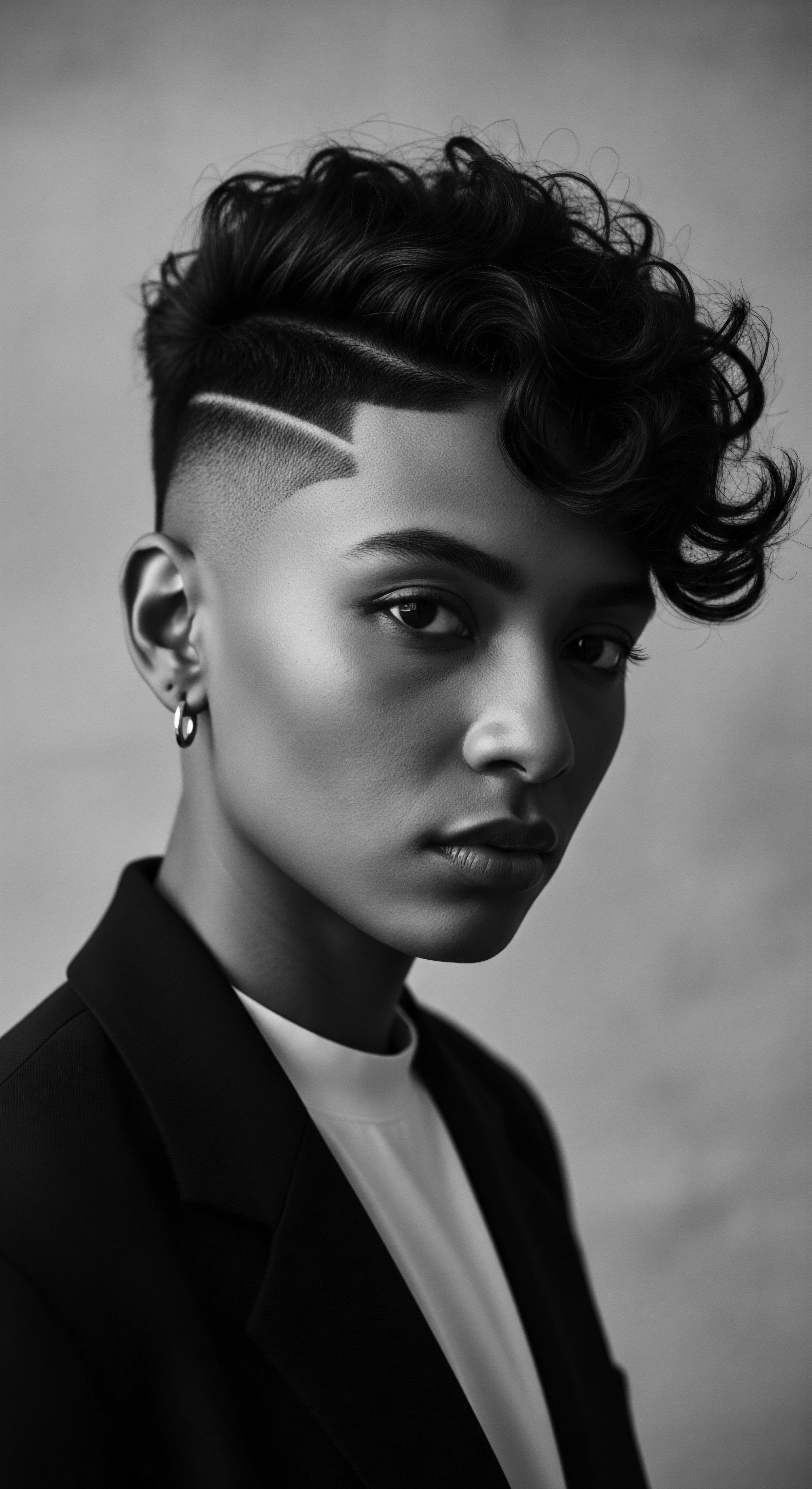
Problem Solving and Holistic Influences on Hair Health
Addressing hair concerns within Black communities has always involved a blend of practical problem-solving and holistic philosophies. Issues like breakage, dryness, and scalp irritation, exacerbated by historical conditions and later, harsh chemical treatments, led to innovative solutions. The ‘kitchen beautician’ tradition, where women experimented with homemade remedies and shared knowledge, became a significant part of this problem-solving heritage. This communal exchange of information fostered a collective expertise, ensuring that care solutions were widely accessible and culturally informed.
The understanding of hair health also extends beyond the topical. Ancestral wellness philosophies consistently linked physical well-being, nutrition, and even spiritual harmony to external manifestations like hair health. A balanced diet, stress reduction, and a connection to nature were understood as foundational to vitality, including robust hair growth.
This holistic view, where hair is considered an extension of overall well-being, continues to influence modern Black hair care, encouraging an integrated approach that addresses the body, mind, and spirit. This comprehensive approach to care, inherited from forebears, underscores the deep intelligence and adaptive capacity of Black communities in preserving their unique hair heritage.
The practices of hair care, from selecting ingredients to nightly rituals and addressing specific challenges, stand as a powerful relay of heritage. Each step in the regimen is a continuation of ancestral wisdom, a daily affirmation of identity, and a profound act of resilience passed from one generation to the next, ensuring the vitality of textured hair and the communities it adorns.
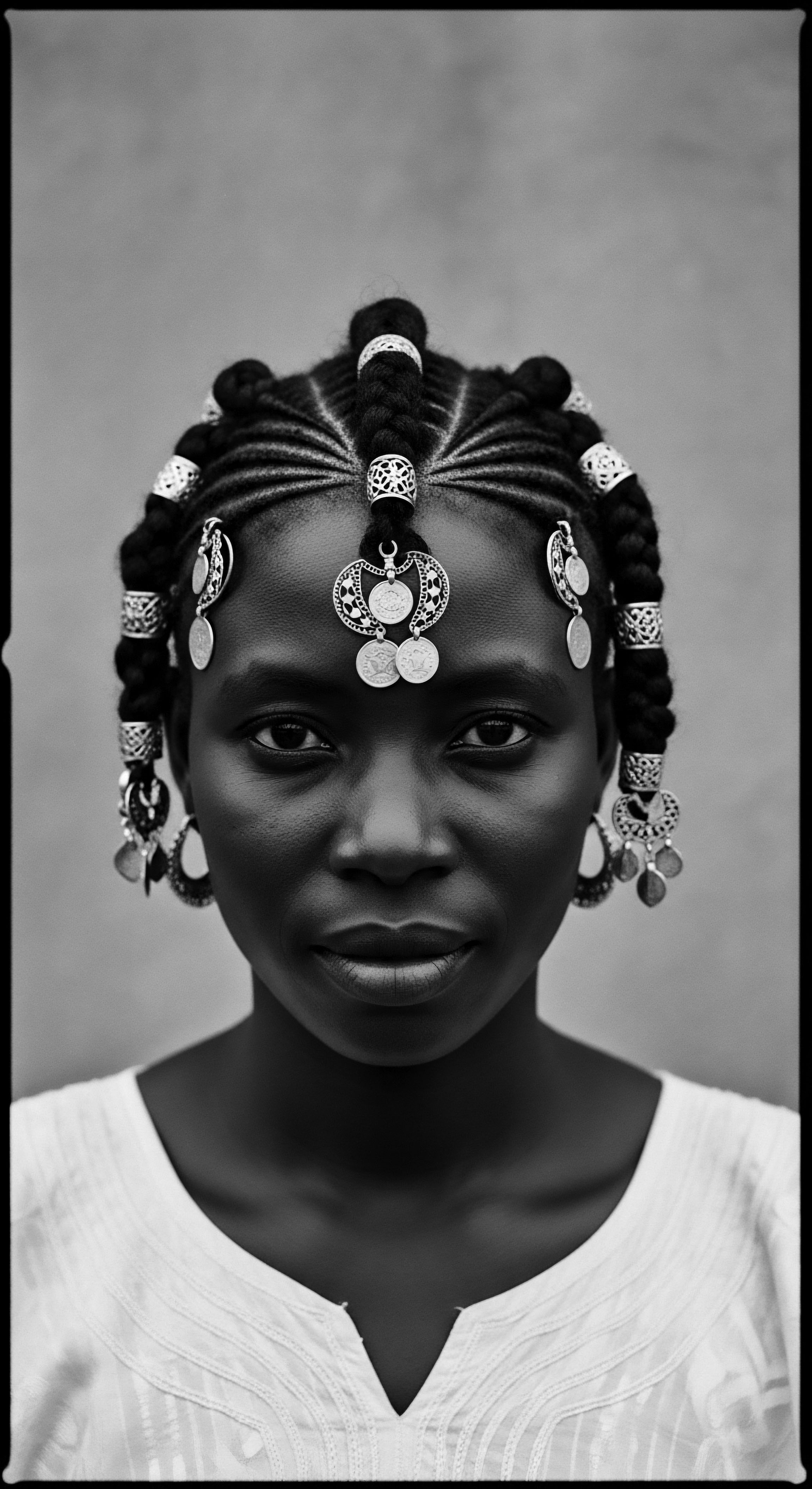
Reflection
The journey through the historical landscape of Black hair care reveals something far more profound than mere grooming practices. It unfolds as an enduring testament to the ingenuity, adaptability, and unwavering spirit of Black and mixed-race communities. Each coiled strand, every carefully crafted braid, and every shared moment of care represents a thread in a rich, living archive of resilience. From the primordial adaptations that shaped its very structure, through the ingenious acts of resistance during unthinkable oppression, to the vibrant affirmations of self today, textured hair has consistently mirrored and supported the collective strength of its people.
This heritage of hair is not a static artifact; it breathes, it grows, it evolves, carrying the genetic echoes of ancient lands and the wisdom gleaned from centuries of trials and triumphs. The ‘Soul of a Strand’ whispers of ancestral hands, of clandestine messages woven into cornrows, of entrepreneurial spirit rising from necessity, and of movements that declared self-love a revolutionary act. It reminds us that care for hair is an act of honoring lineage, a defiant stand against erasure, and a celebratory expression of identity.
As we continue to understand and appreciate the intricate biology and profound cultural weight of textured hair, we do more than simply maintain its health; we safeguard a legacy, adding our own chapters to this ongoing narrative of beauty, perseverance, and belonging. It stands as a vibrant, undeniable marker of a heritage that refused to be broken, an ongoing source of pride and connection across the globe.
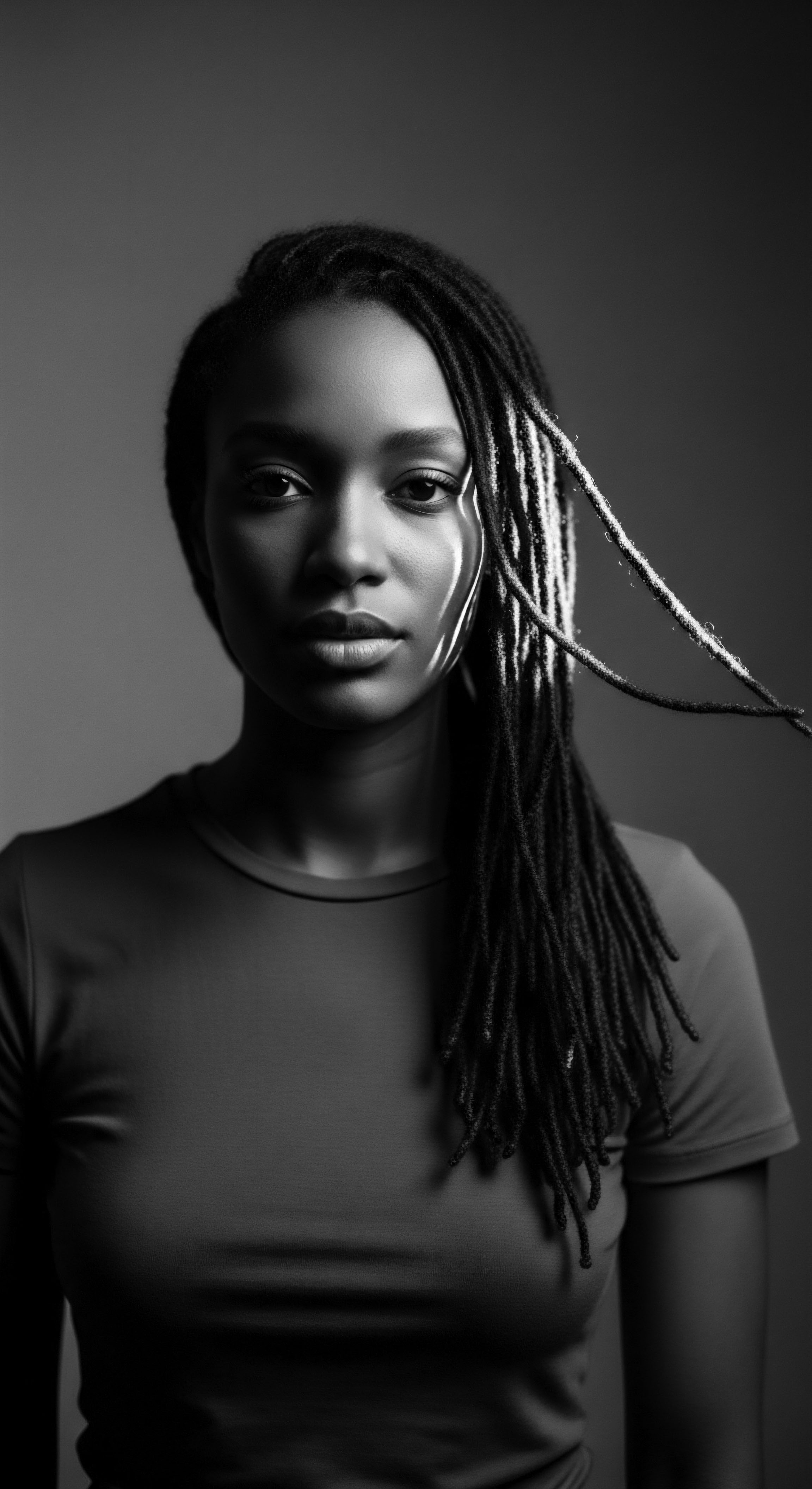
References
- Banks, Ingrid. Hair Matters ❉ Beauty, Power, and Black Women’s Consciousness. NYU Press, 2000.
- Bundles, A’Lelia. On Her Own Ground ❉ The Life and Times of Madam C. J. Walker. Scribner, 2001.
- Byrd, Ayana D. and Lori L. Tharps. Hair Story ❉ Untangling the Roots of Black Hair in America. St. Martin’s Press, 2001.
- Graham, Rochelle. The Essential 17 Hair Growth Oil. Alikay Naturals, ongoing.
- Lasisi, Tina. “The Evolutionary Advantage of Curly Hair.” As discussed on The Decibel podcast, The Globe and Mail, August 9, 2023.
- Mintel. “Black Consumers ❉ Hair Care and Hair Styling Products—US.” October 2018.
- Patton, Tracey Owens. “African American Women, Hair, and Self-Esteem.” Journal of Black Studies, vol. 41, no. 1, 2010, pp. 41-57.
- Robinson, Lori. “Black Hair ❉ Looking Back and Looking Forward.” Feminist Formations, vol. 23, no. 2, 2011, pp. 367-375.
- Thompson, Cheryl. Black Women and the Politics of Hair. Parlor Press, 2009.
- Walker, Andre. Andre Talks Hair. Simon & Schuster, 1997.
